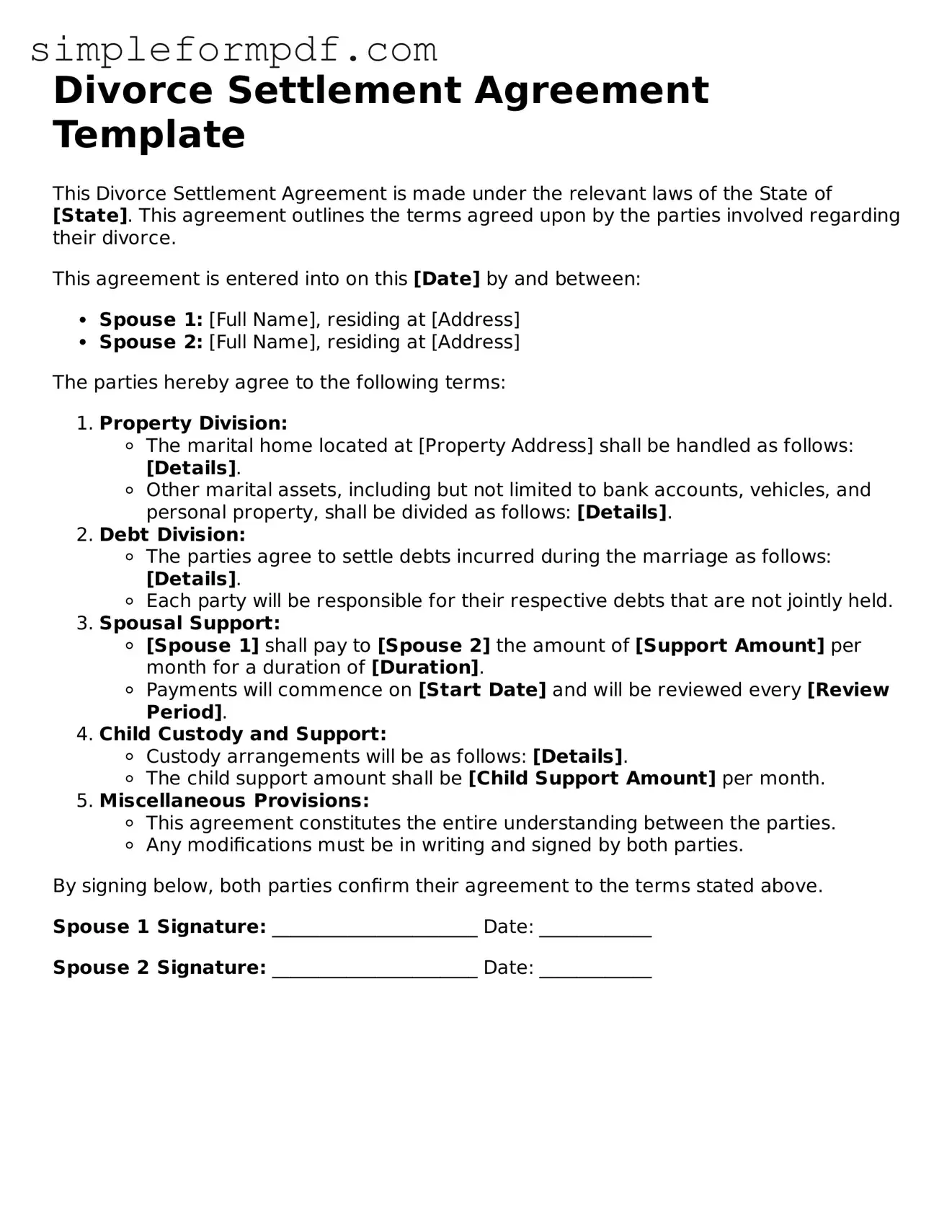Divorce Settlement Agreement Template
This Divorce Settlement Agreement is made under the relevant laws of the State of [State]. This agreement outlines the terms agreed upon by the parties involved regarding their divorce.
This agreement is entered into on this [Date] by and between:
- Spouse 1: [Full Name], residing at [Address]
- Spouse 2: [Full Name], residing at [Address]
The parties hereby agree to the following terms:
- Property Division:
- The marital home located at [Property Address] shall be handled as follows: [Details].
- Other marital assets, including but not limited to bank accounts, vehicles, and personal property, shall be divided as follows: [Details].
- Debt Division:
- The parties agree to settle debts incurred during the marriage as follows: [Details].
- Each party will be responsible for their respective debts that are not jointly held.
- Spousal Support:
- [Spouse 1] shall pay to [Spouse 2] the amount of [Support Amount] per month for a duration of [Duration].
- Payments will commence on [Start Date] and will be reviewed every [Review Period].
- Child Custody and Support:
- Custody arrangements will be as follows: [Details].
- The child support amount shall be [Child Support Amount] per month.
- Miscellaneous Provisions:
- This agreement constitutes the entire understanding between the parties.
- Any modifications must be in writing and signed by both parties.
By signing below, both parties confirm their agreement to the terms stated above.
Spouse 1 Signature: ______________________ Date: ____________
Spouse 2 Signature: ______________________ Date: ____________
